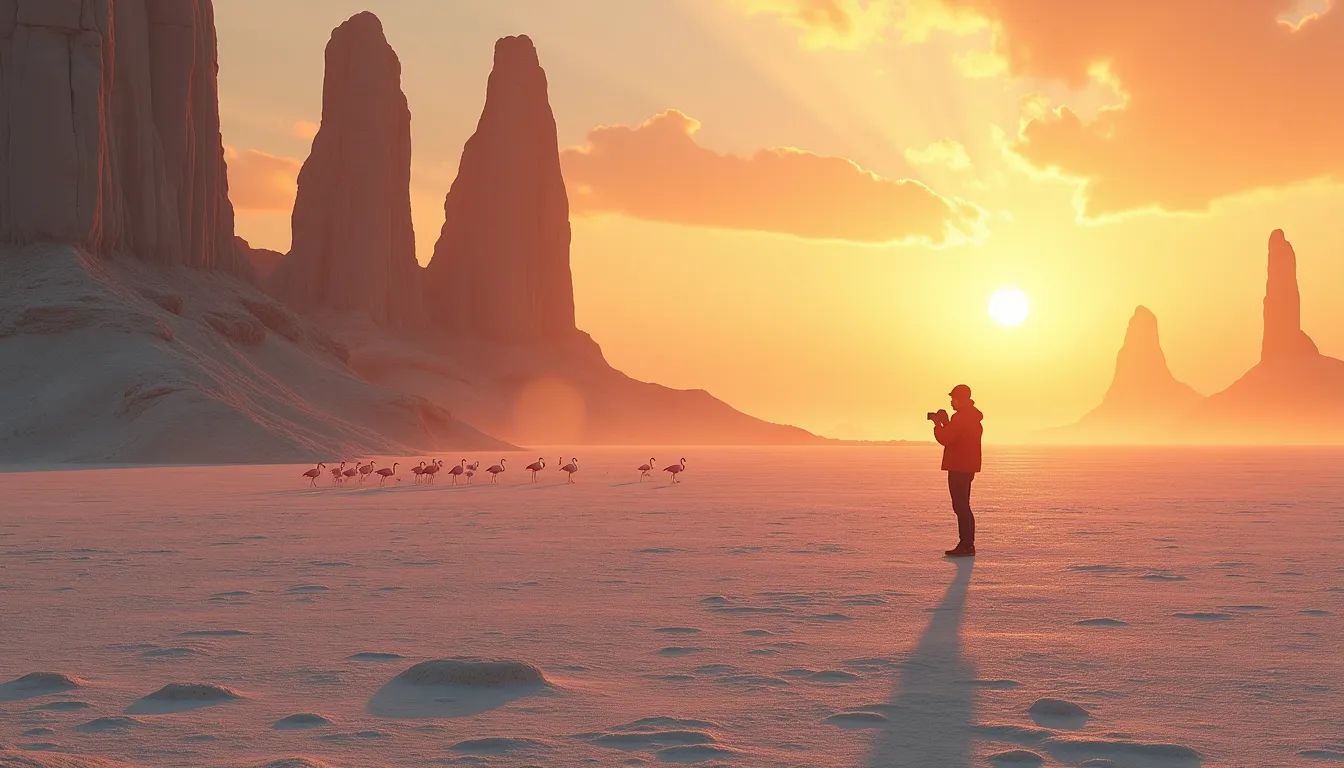In the heart of the Horn of Africa lies a geological wonderland that defies imagination. Lac Abbé, straddling the border of Djibouti and Ethiopia, is a testament to nature’s artistic prowess. This otherworldly landscape, with its towering limestone chimneys and salt-encrusted plains, has captivated adventurers and scientists alike for generations. As the sun rises over this alien terrain, casting long shadows across the barren expanse, one can’t help but feel transported to another planet entirely.
The Martian Landscape of Earth
Lac Abbé’s most striking feature is its forest of limestone chimneys, some soaring up to 50 meters high. These natural skyscrapers, formed by hot springs depositing minerals over millennia, create a surreal skyline that could easily be mistaken for a sci-fi movie set. The lake’s hostile environment rivals even the most extreme locations on Earth, making it a perfect analog for Mars exploration studies.
“Standing amidst the chimneys of Lac Abbé, you feel as if you’ve stepped onto another world. It’s the closest we can get to experiencing Mars without leaving Earth,” remarks Dr. Aisha Hassan, a geologist who has studied the region extensively.
A Salty Symphony: Lake Assal’s Crystalline Beauty
Just a stone’s throw from Lac Abbé lies Lake Assal, a dazzling jewel in Djibouti’s crown. As Africa’s lowest point and the world’s third-lowest land depression, Lake Assal is a marvel of nature. Its shores, encrusted with brilliant white salt crystals, create a stark contrast against the dark volcanic rocks surrounding it. The lake’s hypersaline waters, even saltier than the Dead Sea, shimmer under the African sun, creating a mesmerizing spectacle that draws visitors from around the globe.
The Nomads of the Afar: Custodians of the Desert
The harsh landscapes of Lac Abbé and its surroundings are home to the resilient Afar people. These nomadic tribes have thrived in one of the most inhospitable regions on Earth for centuries. Their intimate knowledge of the land and their ability to navigate the challenging terrain offer visitors a unique glimpse into a way of life that has remained largely unchanged for generations.
“Our ancestors have roamed these lands since time immemorial. The desert is harsh, but it is our home, and we know its secrets,” shares Halima, an Afar elder, her weathered face a testament to a life lived in harmony with this unforgiving environment.
Sunrise Spectacle: A Photographer’s Dream
For those willing to brave the early morning chill, the sunrise over Lac Abbé offers a reward beyond compare. As the first rays of light pierce the horizon, the limestone chimneys cast long shadows across the salt flats, creating a breathtaking interplay of light and shadow. This daily spectacle draws photographers from around the world, eager to capture the ethereal beauty of this unique landscape.
Flamingos in Flight: A Splash of Pink in the Desert
Despite its harsh appearance, Lac Abbé is a haven for wildlife, particularly flamingos. These graceful birds add a surprising splash of color to the otherwise monochromatic landscape. Watching thousands of flamingos take flight against the backdrop of the limestone chimneys is a sight that stays with visitors long after they’ve left this enchanted land.
Camping Under the Stars: A Night to Remember
For the ultimate Lac Abbé experience, nothing beats camping under the vast African sky. As night falls, the landscape transforms, with the limestone chimneys silhouetted against a canopy of stars. The silence of the desert, broken only by the occasional call of a nocturnal creature, offers a profound sense of peace and connection to nature that’s increasingly rare in our modern world.
Sustainable Tourism: Preserving Lac Abbé’s Fragile Beauty
As Lac Abbé gains recognition, efforts are underway to promote sustainable tourism practices that protect this unique ecosystem. Visitors are encouraged to tread lightly, respect local customs, and support community-based initiatives. This approach ensures that future generations can continue to marvel at this geological wonder while supporting the livelihoods of the Afar people.
Beyond Lac Abbé: Djibouti’s Hidden Treasures
While Lac Abbé is undoubtedly the star attraction, Djibouti offers a wealth of other natural wonders waiting to be explored. From the hidden waterfalls to the vibrant coral reefs of the Red Sea, this small nation packs a big punch for adventure seekers. Those looking to extend their journey might consider exploring other hidden gems around the world, such as lesser-known canyons that rival Yellowstone without the crowds.
Planning Your Lac Abbé Adventure
Visiting Lac Abbé requires careful planning and a spirit of adventure. The best time to visit is between November and February when temperatures are more moderate. Travelers should be prepared for basic accommodations and long drives on rough roads. However, for those willing to venture off the beaten path, the rewards are immeasurable.
A Journey of Discovery
Lac Abbé is more than just a destination; it’s a journey of discovery—both of the natural world and of oneself. In this alien landscape, where the borders of reality seem to blur, travelers find themselves confronted with the raw beauty of our planet and the resilience of the human spirit. It’s a place that challenges our perceptions and leaves an indelible mark on the soul of all who visit.
As you stand amidst the towering chimneys of Lac Abbé, watching the flamingos take flight against the setting sun, you can’t help but feel a sense of awe at the wonders our world still holds. This remote corner of Africa, with its Martian landscapes and rich cultural heritage, serves as a powerful reminder of the incredible diversity of our planet and the importance of preserving these unique ecosystems for generations to come.
